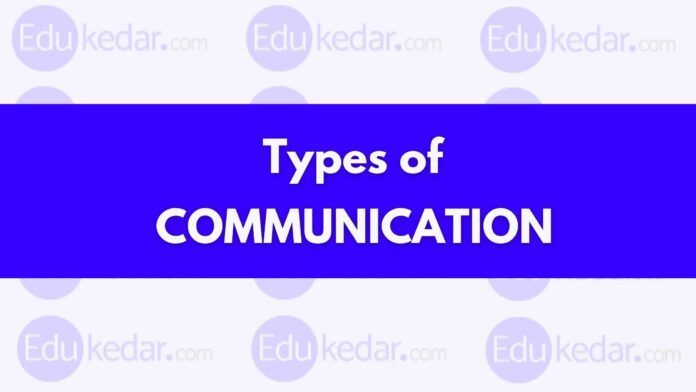Communication is a two-way process by which messages are transferred from one person (source) to another (receiver). Here in this article, we have shared types of communication based on mode, based on the flow of information, and based on relationship.
There are several different ways we can share messages or information with one another. For example, you might use verbal communication such as speech when sharing a presentation with a group. Jobseekers use written communication when applying for a job or sending an email.
We will give you a complete understanding of types of communication because most of the article on the internet only talks about the mode of communication. There is more classification of communication-based on other factors also. So let’s start our discussion!
► Types of Communication
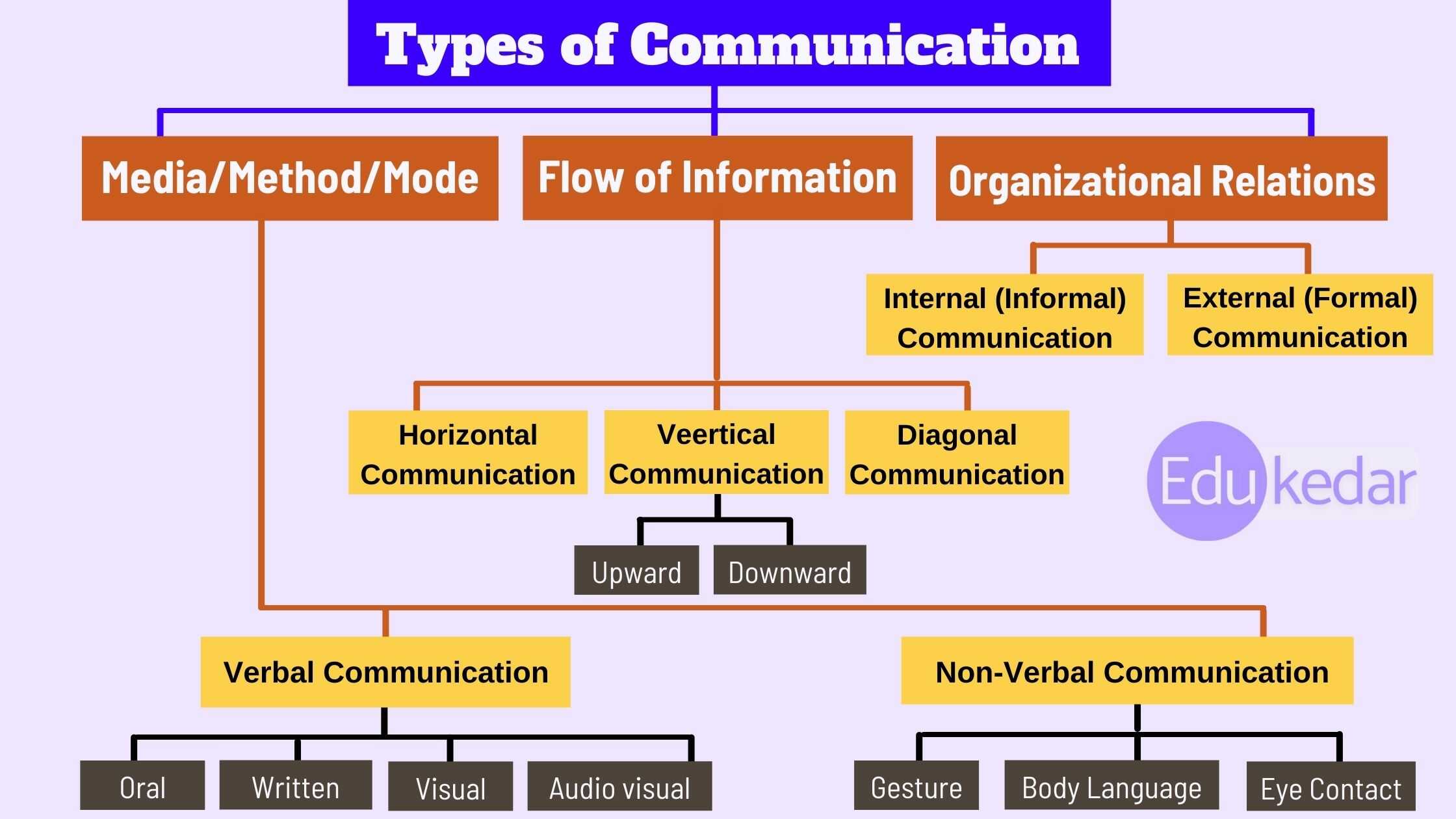
There are many types of communication but to know it in an organized way we have classified communication based on three different circumstances.
- A) Based on Media/Method/Mode
- B) Based on Flow of Information
- C) Based on Organisational Relationship
► A) Types of Communication (Media or Methods)
On the basis of methods, Communication is mainly divided into two types that are as follows;
- Verbal Communication
- Non-Verbal Communication
◉ Verbal Communication
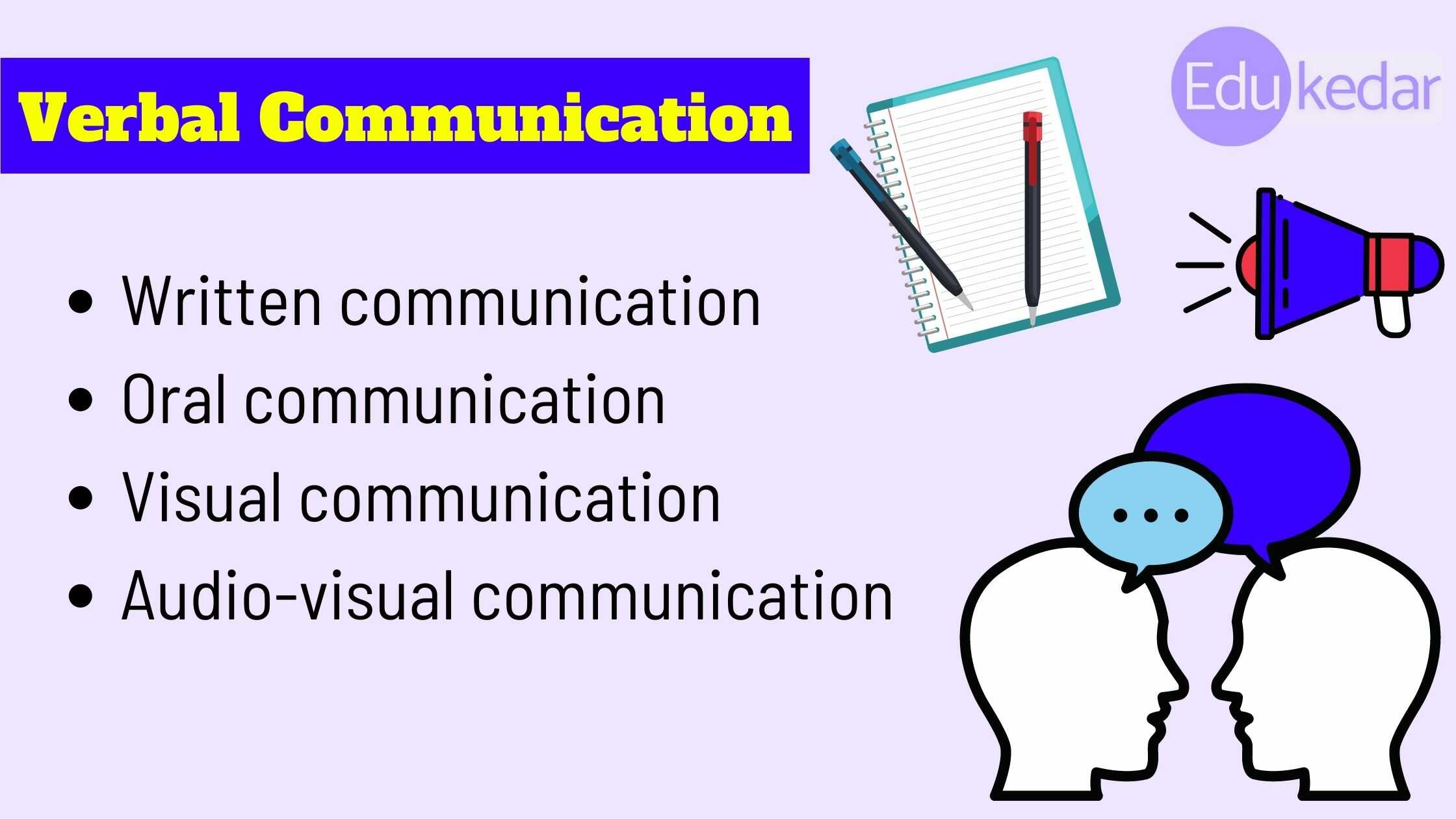
Verbal Communication is a written or a spoken message that uses words to exchange ideas and information. Words are selected in phrases, sentences, and paragraphs depending upon the results the verbal communication is trying to achieve.
- Verbal communication is one of the most efficient ways of communication.
- It is one of the most common types or methods of communication.
- It can be more effective with the support of both non-verbal and written communication.
Must Read :Importance of Communication
For example, people often use verbal communication when sharing a presentation with a group. It is often used during video conferences and phone calls, meetings, and one-on-one conversations.
There are four main types of Verbal communication methods that are listed below:
- Written communication
- Oral communication
- Visual communication
- Audio-visual communication
1. Written Communication: Written communication is the act of writing, printing, typing (texting) symbols like letters and numbers to convey information.
- It is helpful because it provides a record of information for reference.
- Emails and Message Chats are the modern forms of written communication in the workplace.
Examples of Written Communication include:
Books
pamphlets
blogs
letters
memos
Emails
Chats
2. Oral Communication: According to many research studies, 80% of communication by managers or executives of a company is in the Oral form. Communicating by speaking orally is one of the most efficient ways of communication.
Examples of Oral Communication include:
• Telephone/Mobile Phone Calls
• Voice Messages
• Intercom
• Face-to-face discussion
• Conferences and Meetings
• Audio-Visual Presentations
• Dictation
• Interview
• Conversation
• Grapevine
• Radio
• Speeches
3. Visual Communication: Visual communication is the act of using photographs, art, drawings, sketches, charts, and graphs to convey information.
- Visuals are often used with written or verbal communication or a combination of both.
- Many people have different learning styles, visual communication such as presentations might be more engaging for some to consume ideas and information.
- Visuals are important during presentations to provide helpful context alongside written and verbal communication.
Examples of Visual Communication include:
• Graphs
• Tables and charts
• Maps
• Prototypes
• Presentations
• Flipcharts
• Neon Hoardings
• Printed Pictures, T-shirts, and Posters
• Internet without multimedia
4. Audio-visual Communication: This combination is increasing especially in the field of the IT sector has brought about unprecedented changes in the communication systems.
Traditional modes of Audio-Visual (AV) such as TV programs, Movie theatre are now in an updated version like Web series, OTT (Over-the-top) media services.
Must Read :5 Barriers in Communication
Examples of Visual Communication include:
• Television/video/cable
• Cinema
• Internet with multimedia
• Presentation using visual aids or electronic presentation
• Video conferencing
◉ Nonverbal Types of Communication
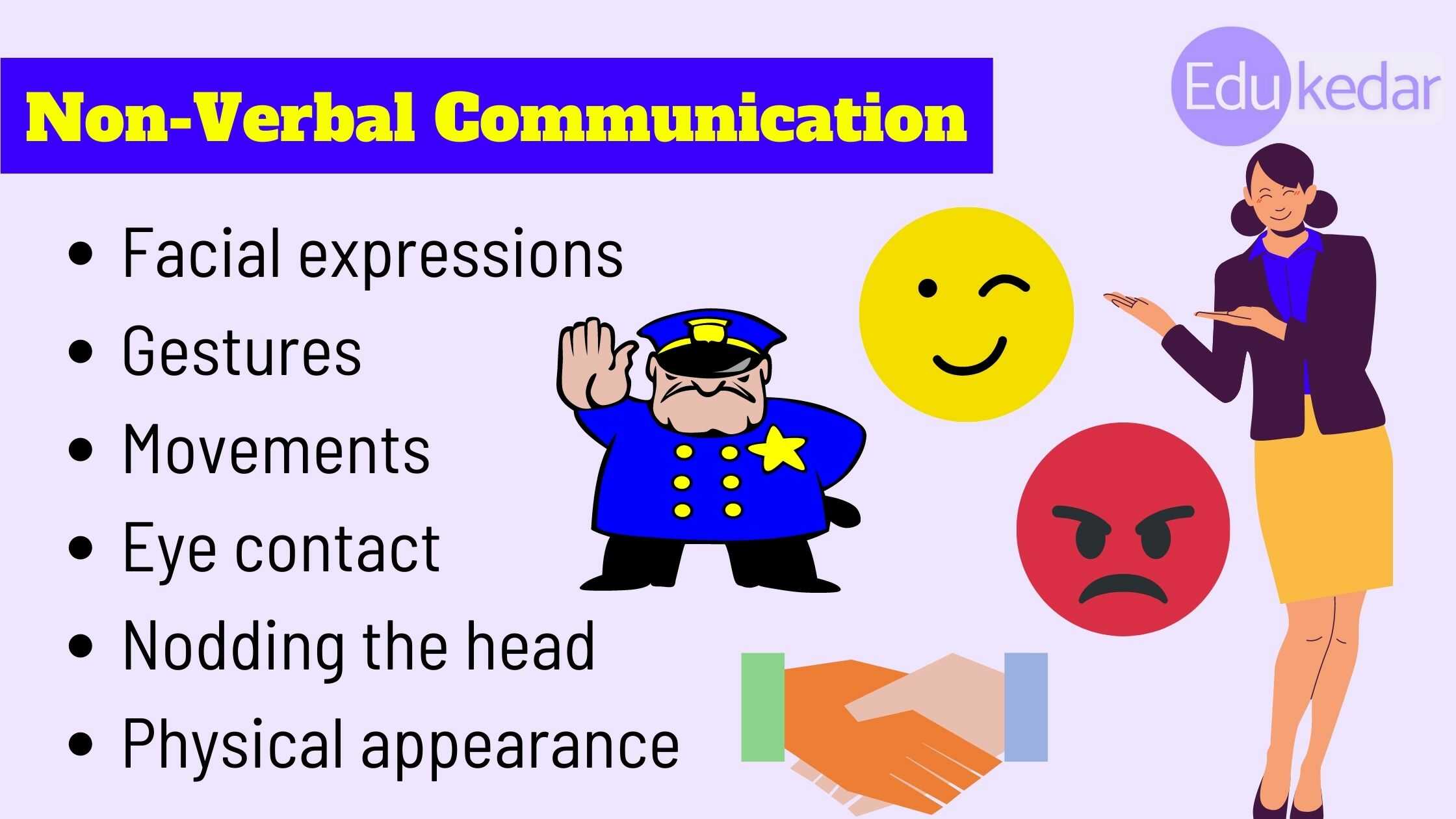
It is body language and gestures to communicate
Nonverbal communication is an unspoken or unwritten message that uses body language, gestures, and facial expressions to convey information to others.
- Gestures and expressions can be used both intentionally and unintentionally.
- Nonverbal communication is helpful when understanding feelings of the other persons.
- For example, someone might smile unintentionally when he hears praise or good news.
Some other examples are listed below!
Examples of Non-verbal Communication includes;
- Facial expressions
- Gestures
- Movements
- Eye contact
- Nodding the head
- Physical appearance
◉ Other Medium of Communication in business
Different modern methods of communicating in a business are as below:
- Electronic Mail or E-mail system
- Instant messaging Applications
- Smartphones
- PDA
- Forums or Newsgroups
- Blogs & Websites
- Skype & Video Calling Apps
- Web conferencing
► B) Types of Communication (Flow of Information)
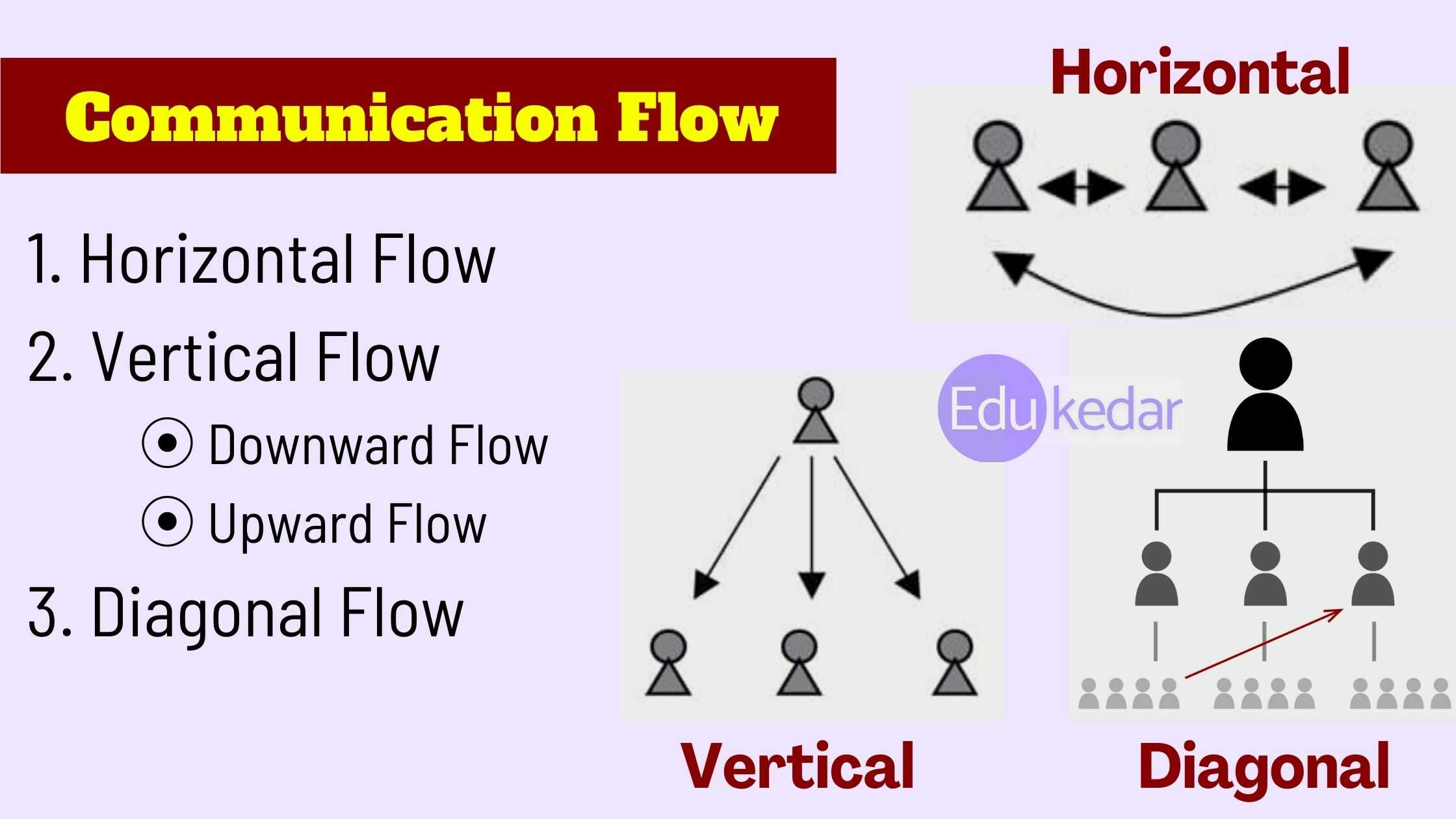
The flow of information (communication) in an organization depends on the size, structure, and hierarchy of the company.
- Smaller organizations, MSME with fewer levels of hierarchy and staff maybe having fewer communication problems.
- It is more complicated in larger organizations such as MNCs with many hierarchical levels.
However, a comprehensive company structure will help in clearly marking out the mode or channels of communication.
The communication flow of information is classified mainly into three categories;
- Horizontal Flow of Communication
- Vertical Flow of Communication (Downward/Upward Flow)
- Crosswise or Diagonal Flow of Communication
◉ Horizontal Flow:
The horizontal flow of communication takes place between people of the same status and level of hierarchy in the company.
Nowadays Horizontal organizational structures are very common and employees have their ranks that can manage to converse with less reserve and formality. There are many benefits of such openness.
Must Read :Skills of HR Manager
Organizational Policy decisions are no longer cover in mystery. Workers are encouraged to participate to ask questions and understand the compulsions of hard decisions.
This increases understanding and coordination. However, it is essential to continue to respect the authority of the management. One should use appropriate language and show good behavior.
◉ Vertical Flow:
The vertical flow of communication is further divided into two categories;
- Downward Flow
- Upward Flow
Downward Flow: It is a traditional way of communication method known as vertical structural Flow or Downward Flow. In this type of communication, every important decision is taken at the top. Information goes through different levels of hierarchy to the workers.
Downward flow has many disadvantages of such as follows;
- Firstly, it creates pressure on the employee by the authoritarian environment from the top.
- Secondly, most of the time message is distorted due to various barriers in the communication as it comes down through different levels.
- Thirdly, it is time taking process and leads to avoidable delays.
Upward Flow: Vertical Flow of Communication evolved with the passage of time and management did structural changes in their styles. This updated vertical flow of communication is known as Upward Flow.
In this method, workers got their respect in the industry, and their work began to be appreciated.
- They got empowerment and their participation also increased.
- After this, the workers feel involved in their organizations.
- As a result, there is a significant increase in the flow of upward communication.
◉ Diagonal Flow (Crosswise Flow):
Diagonal or Crosswise Communication is a process whereby the flow of information is between heads of the department (eg- Sales Manager, HR Manager) who work in different departments and are at different levels of the organization.
The diagonal flow of communication is a mixture of vertical and horizontal flow. It is also known as the Crosswise flow of communication.
In an organization, It has been seen many times that information is suitably distorted or filtered by superiors before it is allowed to reach the top management.
Must Read :Levels of Mamagement
This is the reason one has to enable people to talk to lower or higher ranks freely rather than wait indefinitely.
The diagonal flow of communication is based on cooperation, mutual respect, and goodwill between the parties concerned.
► C) based on Organisational Relationship
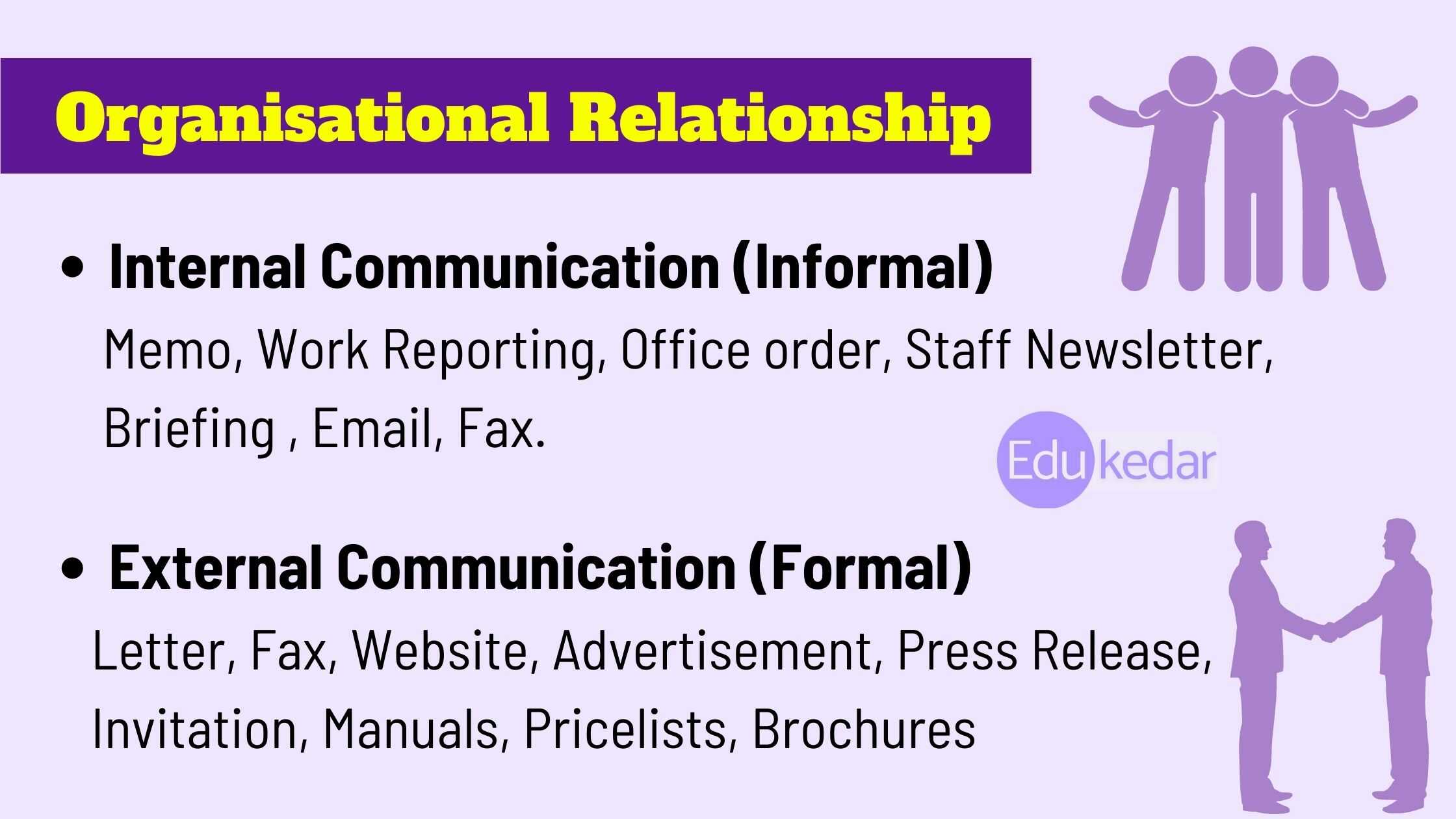
On the basis of organizational relationships, Communication may be divided into two types:
- Internal Communication (Informal Communication)
- External Communication (Formal Communication)
◉ Internal or Informal Communication
Internal Communication simply means when employees of the organization communicate with one another.
Internal communication is also known as informal communication because employees of an organization are familiar with each other and they work as a team and work towards common goals.
In internal communication, information shared by employees can be official or unofficial. They may communicate individual to individual, individual to the groups, and dept to the department, etc.
Generally, internal communication is in the oral form and most of the time tone is informal. People also communicate within the organization at a personal level.
Must Read :Management by Objectives (MBO)
Grapevine communication is casual and unofficial communication that is present in some measure everywhere. It usually occurs inside companies and it comes under internal communication.
All modes of non-verbal communication may be used in internal communication.
Examples of Internal/Informal Communication
Some of the examples of written communication that come under internal communication include Memo, Report, Office order, Staff Newsletter, Circulars, Email, Fax, Agenda, Notes on Agenda, Notice, Minutes of Meetings, Manuals, etc.
All other methods of oral communication stated earlier could be used in internal communication except Radio.
◉ External or Formal Communication
External Communication occurs when any person from the organization communicates with anyone outside the organization.
The point to be noted here is, these people may be clients or customers, suppliers or distributors, media, government officials, public, regulatory bodies, other companies, etc.
Modern business houses invest a lot of time, money, and plans on improving their public image since they know that they are dependent on external support.
External communication has been mainly formal in nature and largely documented that is why it is also known as Formal Communication.
Examples of External/Formal Communication
Business Letters and circulars, Manuals, Pricelists, Purchase Orders, Brochures, Customised reports, and service calls, Tender documents, Ads, Customer feedback forms are all external communication methods.
Some of the other modes of written communication that are largely used include Circulars, E-mail, Fax, Questionnaire, Advertisement, Press Release, Invitation, Leaflet, Handbills, Manuals, and Telegram, etc.
Other than intercom, teleconferencing, brainstorming sessions, and all other modes of oral communication stated earlier can be used in formal or external communication.
All modes of visual presentations and audio-visual communication too may be used in formal/external communication.
All modes of Non-verbal communication are also widely used in formal communication depending on the circumstances and protocol chosen for the purpose.


